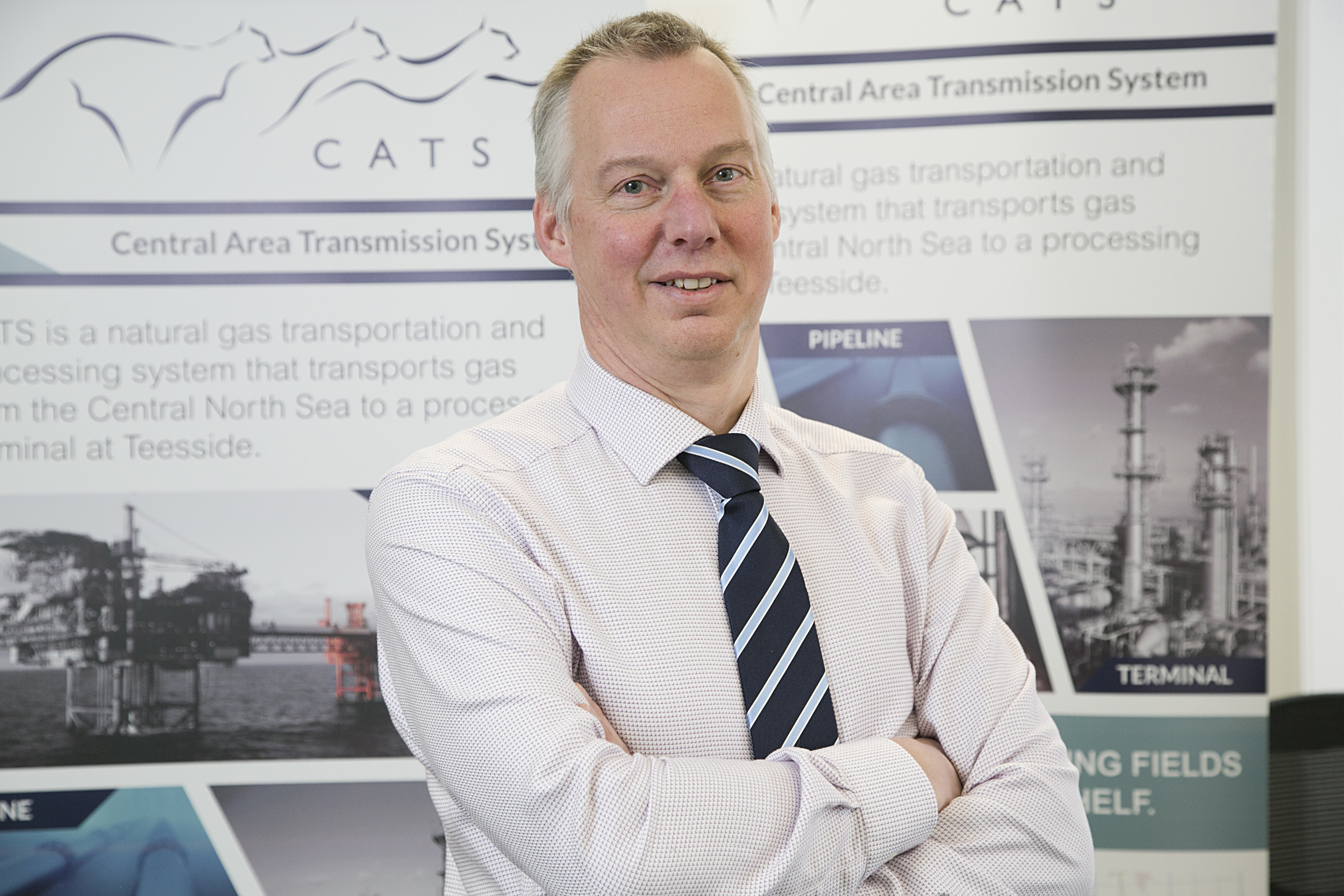
The manager of a major pipeline system has said reinvestment in ageing infrastructure is “critical” to the North Sea reaching its potential.
The comments from Andy Hessell of the Central Area Transmission System (CATS) come after industry veteran Sir Ian Wood told a government inquiry that questions remain over how long pipelines will last and to what extent the industry will reinvest in them.
There have been several issues with major pipelines in recent months, most prominently an extended shutdown of the Forties system in December after a crack was found in the line in Aberdeenshire.
Since then there was an issue with the Brent and Ninian lines at the Sullom Voe terminal in Shetland in May.
The Central Area Transmission System (CATS) is a crucial pipeline serving 30 North Sea fields and last year delivered more than 5billion cubic feet of gas to the UK.
It is owned by CATS Management (CML) a subsidiary of Antin Infrastructure Partners.
Andy Hessell is the managing director of CML, and said existing infrastructure needs investment to realise the North Sea’s full potential.
He said: “We fully agree with Sir Ian that investment in existing and new infrastructure is critical to maximising economic recovery and realising the considerable potential of the UKCS.
“We have invested in CATS as a critical piece of UK infrastructure to ensure it supports our existing customers, and new fields such as Culzean, which is on track to start up in 2019.
“We fully intend CATS to be available to meet the needs of upstream producers, developers and explorers for beyond the next 20 years.”
Sir Ian Wood told the Scottish Affairs Committee in June that the issue of reinvestment needs to be looked at.
He said: “The problem we have is our infrastructure, how long will it last? To what extend will we look to further invest in the infrastructure? We’re investing in the recovery part but in terms of pipelines and other key parts of the system we’ve not invested a lot so a decision has got to be made there.”
Ian Philips, the CEO of the Oil and Gas Innovation Centre and chairman of the Aberdeen branch of the Society of Petroleum Engineers, said the point is an important one for ever-aging infrastructure.
He warned that it is important that the route to market for oil and gas remains in good condition.
He said: “We’ve still got a lot of oil that we know about in the North Sea and we expect still to find quite a lot but if the route to market is no longer available, then it may just stay in the ground and be an interesting bit of science, rather than something economically useful.
“I think the point that Ian Wood makes very powerfully is that some of that infrastructure now is quite old.
“If you take the Forties pipeline as an example, it was re-laid about 15-20 years ago because BP found a defect and it was so economically attractive that it was a no-brainer to lay a new pipeline.
“But if you’re now in a place where you’re at the tail-end of the life of all of the fields that are around in a particular area, it might not be economically viable to repair the pipeline.
“If that happens then new, smaller discoveries in the area no longer have a pipeline to go through.”
Several pipelines have switched to new ownership in recent years with Forties changing hands from BP to Ineos being one example, as gradually less of the oil going through it was owned by BP.
Many are now owned by infrastructure companies – such as Antin for the CATS system.
Mr Philips said it will be down to them to decide on the levels of future investment.
He said: “You’ve now got that approach offshore with pure investment companies owning and operating the pipelines but they don’t own the oil and gas that goes through it.
“Do those infrastructure companies see value in investing in the pipeline? That will be driven by their perception of how much more oil or gas is available to go through.”
Mr Hessell from CML said his firm, which acquired BP’s stake in CATS in 2015, is committed to making sure production can go through the CATS system for another two decades.
He added: “Our role as infrastructure owner is to invest in infrastructure, run it safely and efficiently and encourage and incentivise further upstream developments.
“Continued investment in infrastructure is critical to unlocking the North Sea’s potential.”
Recommended for you


